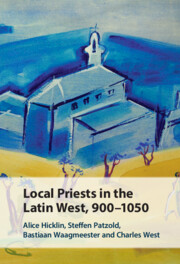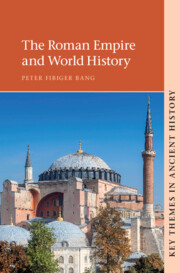Refine search
Actions for selected content:
616368 results in History

East Asia and the Modern International Order
- From Imperialism to the Cold War
- Coming soon
-
- Expected online publication date:
- November 2025
- Print publication:
- 20 November 2025
-
- Book
- Export citation

Hunger Redraws the Map
- Food, State, and Society in the Era of the First World War
-
- Published online:
- 01 November 2025
- Print publication:
- 20 November 2025

Local Priests in the Latin West, 900–1050
-
- Published online:
- 31 October 2025
- Print publication:
- 13 November 2025
-
- Book
-
- You have access
- Open access
- Export citation

The Roman Empire and World History
-
- Published online:
- 31 October 2025
- Print publication:
- 30 October 2025

African Literature in Transition
- The Archive of African Literature, 1800–2000
-
- Published online:
- 31 October 2025
- Print publication:
- 13 November 2025

Race, Genetics, History
- New Practices, New Approaches
- Coming soon
-
- Expected online publication date:
- October 2025
- Print publication:
- 31 December 2025
-
- Element
- Export citation

Self-Made
- The Stories That Forged an American Myth
-
- Published online:
- 30 October 2025
- Print publication:
- 30 October 2025

The New Cambridge History of the English Language
- Context, Contact and Development
-
- Published online:
- 30 October 2025
- Print publication:
- 30 October 2025

Distant Friends and Intimate Enemies
- A History of American-Russian Relations
-
- Published online:
- 30 October 2025
- Print publication:
- 20 November 2025
Tables
-
- Book:
- The Capitalist Self
- Published online:
- 12 October 2025
- Print publication:
- 30 October 2025, pp xi-xii
-
- Chapter
- Export citation
Museum film as a means of making museums: the Exploratorium’s early years through the intermedial lens
-
- Journal:
- The British Journal for the History of Science , First View
- Published online by Cambridge University Press:
- 30 October 2025, pp. 1-17
-
- Article
-
- You have access
- Open access
- HTML
- Export citation
Chapter 5 - Suárez on the Origin of Falsity
- from Part II - Being, Its Properties, and Ancillary Notions
-
-
- Book:
- Suárez's <i>Metaphysical Disputations</i>
- Published online:
- 13 October 2025
- Print publication:
- 30 October 2025, pp 87-104
-
- Chapter
- Export citation
Part II - Being, Its Properties, and Ancillary Notions
-
- Book:
- Suárez's <i>Metaphysical Disputations</i>
- Published online:
- 13 October 2025
- Print publication:
- 30 October 2025, pp 33-142
-
- Chapter
- Export citation
4 - Early Panics
-
- Book:
- Before the Fed
- Published online:
- 16 October 2025
- Print publication:
- 30 October 2025, pp 45-62
-
- Chapter
- Export citation
10 - Irregular War and Warfare
- from Part II - The Traditional Security Agenda
-
- Book:
- Understanding International Security
- Published online:
- 11 October 2025
- Print publication:
- 30 October 2025, pp 191-209
-
- Chapter
- Export citation
Technical Appendix 2.2. - Loan Certificates: A Balance Sheet Analysis
-
- Book:
- Before the Fed
- Published online:
- 16 October 2025
- Print publication:
- 30 October 2025, pp 211-218
-
- Chapter
- Export citation
Dedication
-
- Book:
- Before the Fed
- Published online:
- 16 October 2025
- Print publication:
- 30 October 2025, pp ix-x
-
- Chapter
- Export citation
Reviews
-
- Book:
- Understanding International Security
- Published online:
- 11 October 2025
- Print publication:
- 30 October 2025, pp iii-iv
-
- Chapter
- Export citation
Riots could be expected: Toward a global history of protest and reaction at the World Bank
-
- Journal:
- Journal of Global History , First View
- Published online by Cambridge University Press:
- 30 October 2025, pp. 1-22
-
- Article
-
- You have access
- Open access
- HTML
- Export citation
Part II - Contact and External Influences
-
- Book:
- The New Cambridge History of the English Language
- Published online:
- 30 October 2025
- Print publication:
- 30 October 2025, pp 163-384
-
- Chapter
- Export citation
